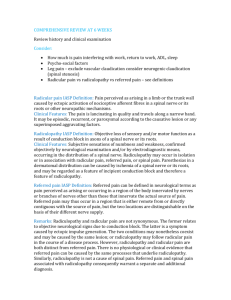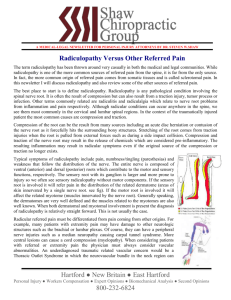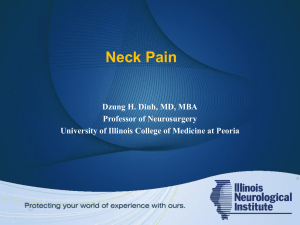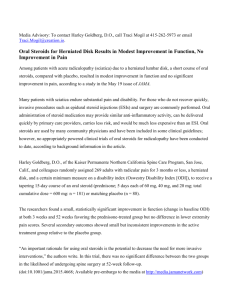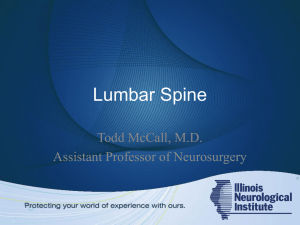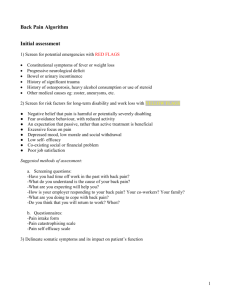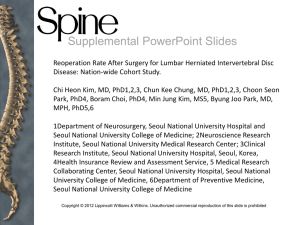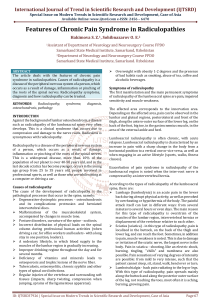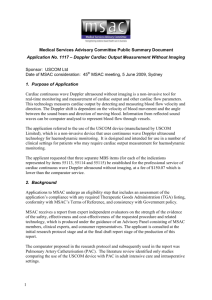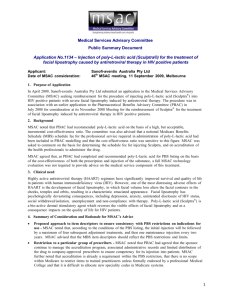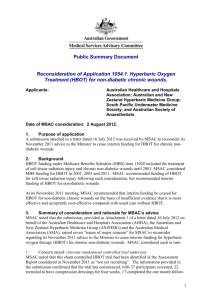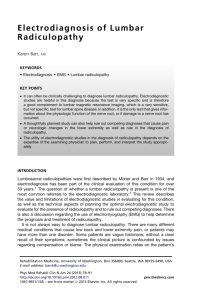1012 - VAX-D therapy.PDF - the Medical Services Advisory Committee
advertisement
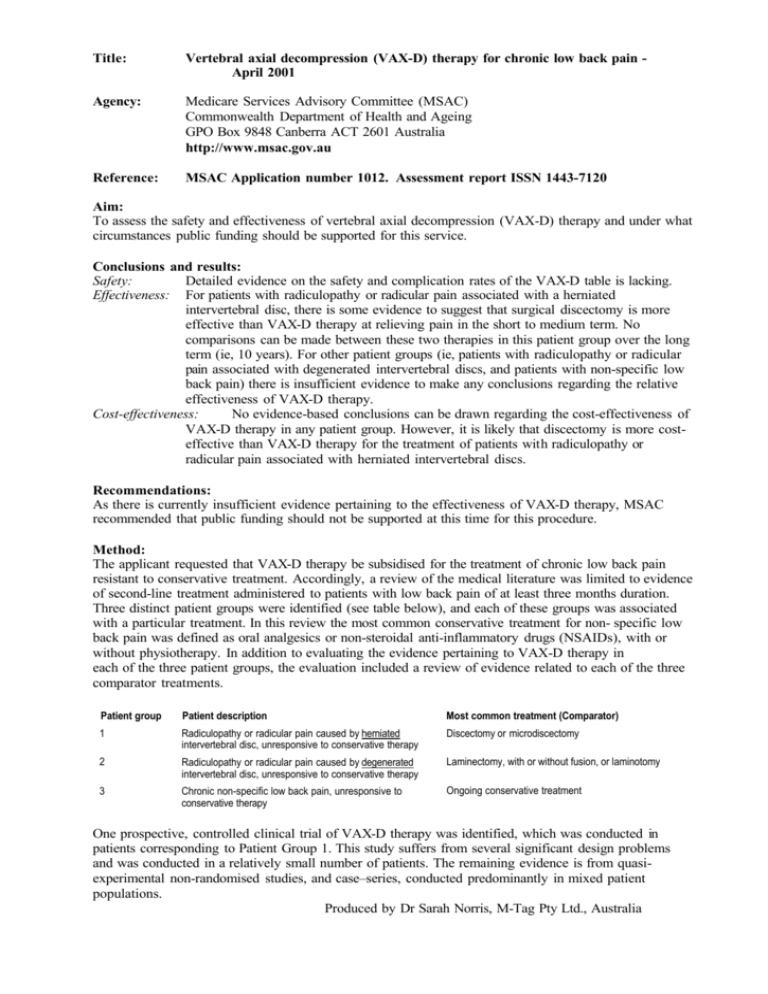
Title: Vertebral axial decompression (VAX-D) therapy for chronic low back pain April 2001 Agency: Medicare Services Advisory Committee (MSAC) Commonwealth Department of Health and Ageing GPO Box 9848 Canberra ACT 2601 Australia http://www.msac.gov.au Reference: MSAC Application number 1012. Assessment report ISSN 1443-7120 Aim: To assess the safety and effectiveness of vertebral axial decompression (VAX-D) therapy and under what circumstances public funding should be supported for this service. Conclusions and results: Safety: Detailed evidence on the safety and complication rates of the VAX-D table is lacking. Effectiveness: For patients with radiculopathy or radicular pain associated with a herniated intervertebral disc, there is some evidence to suggest that surgical discectomy is more effective than VAX-D therapy at relieving pain in the short to medium term. No comparisons can be made between these two therapies in this patient group over the long term (ie, 10 years). For other patient groups (ie, patients with radiculopathy or radicular pain associated with degenerated intervertebral discs, and patients with non-specific low back pain) there is insufficient evidence to make any conclusions regarding the relative effectiveness of VAX-D therapy. Cost-effectiveness: No evidence-based conclusions can be drawn regarding the cost-effectiveness of VAX-D therapy in any patient group. However, it is likely that discectomy is more costeffective than VAX-D therapy for the treatment of patients with radiculopathy or radicular pain associated with herniated intervertebral discs. Recommendations: As there is currently insufficient evidence pertaining to the effectiveness of VAX-D therapy, MSAC recommended that public funding should not be supported at this time for this procedure. Method: The applicant requested that VAX-D therapy be subsidised for the treatment of chronic low back pain resistant to conservative treatment. Accordingly, a review of the medical literature was limited to evidence of second-line treatment administered to patients with low back pain of at least three months duration. Three distinct patient groups were identified (see table below), and each of these groups was associated with a particular treatment. In this review the most common conservative treatment for non- specific low back pain was defined as oral analgesics or non-steroidal anti-inflammatory drugs (NSAIDs), with or without physiotherapy. In addition to evaluating the evidence pertaining to VAX-D therapy in each of the three patient groups, the evaluation included a review of evidence related to each of the three comparator treatments. Patient group Patient description Most common treatment (Comparator) 1 Radiculopathy or radicular pain caused by herniated intervertebral disc, unresponsive to conservative therapy Discectomy or microdiscectomy 2 Radiculopathy or radicular pain caused by degenerated intervertebral disc, unresponsive to conservative therapy Laminectomy, with or without fusion, or laminotomy 3 Chronic non-specific low back pain, unresponsive to conservative therapy Ongoing conservative treatment One prospective, controlled clinical trial of VAX-D therapy was identified, which was conducted in patients corresponding to Patient Group 1. This study suffers from several significant design problems and was conducted in a relatively small number of patients. The remaining evidence is from quasiexperimental non-randomised studies, and case–series, conducted predominantly in mixed patient populations. Produced by Dr Sarah Norris, M-Tag Pty Ltd., Australia
